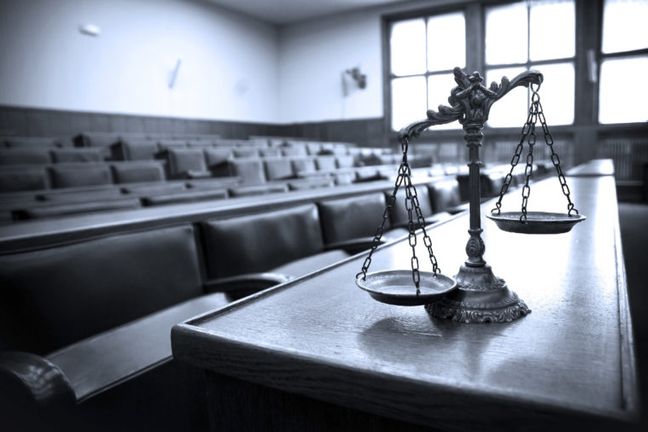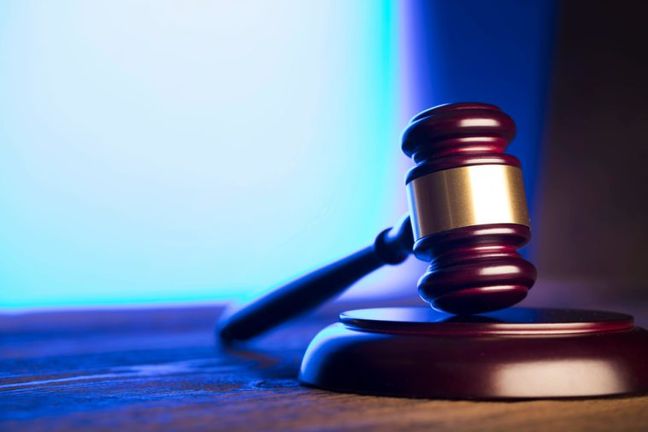Imagine, a plaintiff files a lawsuit and is unaware of a party who may have been responsible for the plaintiff’s injury. As discovery take places, plaintiff learns of this party. The plaintiff now wants to amend the complaint to add this previously unknown party, but the statute of limitations has run. Is there any recourse for plaintiff? The Arizona Court of Appeals recently ruled a plaintiff’s unawareness a party may have been responsible for the plaintiff’s injury constitutes a mistake as to identity of the proper party under Arizona Rules of Civil Procedure (“ARCP”) 15(c)(2). Plaintiff can amend the complaint, adding the previously unknown party, so it relates back to the original complaint for purposes of the statute of limitations.
In Richardson v. All Services Unlimited, Inc., No. 1 CA-CV 15-0642 (Ariz. App. December 14, 2017), Jacob Richardson (“Richardson”) was an ironworker employed by Arizona Steel Construction and Repair, Inc. On January 25, 2012, Richardson was injured while working at a property owned by Bellemont Trucking Repair and Towing, Inc., Bellemont Truck Repair, LLC, and Larry Oldaker (“Bellemont Trucking”). On January 10, 2014, Richardson filed a complaint alleging Bellemont Trucking had control of the property during the construction project, and its negligent maintenance of the property caused Richardson’s injury.
In March of 2014, Richardson learned Bellemont Truck employed All Services Unlimited, Inc., (“All Services”) as a general contractor for the project. Richardson amended his complaint to add All Services as a defendant.
All Services moved for summary judgment, arguing the statute of limitations set forth in A.R.S. § 12-542 barred Richardson’s action because he did not file the amended complaint within two years of the injury. All Services also argued Richardson could not claim his amendment related back to the original complaint under ARCP 15(c)(2) because Richardson had not made a mistake regarding the identity of the correct defendant. Additionally, All Services argued Arizona’s discovery rule did not allow Richardson to name All Services as a defendant after the expiration of the statute of limitations because Richardson had not made a reasonable inquiry about the existence of other potential liable entities.
Richardson responded by arguing the amended complaint related back to the original complaint under ARCP 15(c) because he reasonably believed Bellemont Trucking was acting as both landowner and general contractor for the project. Also, Richardson argued a factual question existed regarding whether he had exercised reasonable diligence in investigating the potential liable entities. Thus, the discovery rule applied and Richardson’s cause of action did not accrue until he learned All Services was the general contractor for the construction project.
The trial court granted All Services’ summary judgment ruling the amended complaint did not relate back under ARCP 15(c). The trial court determined Richardson was not mistaken about Bellemont Truck’s identity as a proper party. Instead, Richardson was mistaken that another potential defendant existed, and the court ruled Richardson’s mistake did not satisfy ARCP 15(c) requirement.
Richardson timely appealed and argued the trial court erred by granting summary judgment for All Services because the amended complaint related back to the original, timely-filed complaint under ARCP 15(c).
The Court of Appeals started its review by analyzing ARCP 15(c). Under ARCP 15(c), an amended complaint relates back if: (1) the claim arose out of the same conduct, transaction, or occurrence as the claim in the original complaint; (2) the added defendant received notice of the action within the applicable limitations period plus the period provided by ARCP 4(i) for the service of the summons and complaint; (3) the notice is sufficient to avoid prejudicing the joined defendant’s ability to defend on the merits; and (4) within the same period, the party to be added by amendment knew or should have known that, but for a mistake concerning the identity of the proper party, plaintiff would have named the proper party in the original complaint.
In this matter, the parties agreed the first three requirements of ARCP 15(c) were satisfied. The disagreement focused on whether Richardson committed a “mistake concerning the identity of the proper party” by naming only Bellemont Truck in the original complaint. Richardson argued had he not been mistaken about Bellemont Truck’s role at the property, he would have named All Services as the general contractor as a defendant in the original complaint.
The Court of Appeals turned to the Arizona Supreme Court’s recent ruling in Flynn v. Campbell, to determine when a mistake is cognizable under ARCP 15(c). 243 Ariz. 76 (2017). The Arizona Supreme Court ruled the question in determining if the mistake is cognizable is whether defendant knew or should have known without some mistake, plaintiff would have filed the lawsuit against defendant. To determine if a mistake has taken place under ARCP 15(c), a court must determine whether in a counterfactual error-free world, the action would have been brought against the proper party
The Court of Appeals ruled Richardson mistakenly believed Bellemont was solely responsible for the property. Richardson did not believe the project had a general contractor, and he was mistaken about who was responsible for the property where his injury occurred.
Takeaway: In many cases, plaintiffs will file a lawsuit when up against the statute of limitations and neglect to name all defendants. Even though your insured may not be named or plaintiff is not aware of the insured, it is important to consult with your defense counsel and be proactive in preparing to defend the case because of the ability to be added to the lawsuit based on the ruling in this case and ARCP 15(c).

 Author: Sitar Bhatt
Author: Sitar Bhatt
 Cannabis Workers Allege Quota to Trim 4 Pounds a Day Violates the California Labor Code
Cannabis Workers Allege Quota to Trim 4 Pounds a Day Violates the California Labor Code
 The Ninth Circuit Reminds Us: Every Word Matters
The Ninth Circuit Reminds Us: Every Word Matters
 NO WAY, PRO SE! The Consequences of Abusing the Judicial System as a Pro Se Litigant in Colorado
NO WAY, PRO SE! The Consequences of Abusing the Judicial System as a Pro Se Litigant in Colorado
 Victim of Financial Mismanagement or Unlawful Retaliation? New Jersey City University Program Founder Claims School Retaliated After Reporting Alleged Sexual Harassment
Victim of Financial Mismanagement or Unlawful Retaliation? New Jersey City University Program Founder Claims School Retaliated After Reporting Alleged Sexual Harassment
 “Real Housewives” Gets a Reality Check
“Real Housewives” Gets a Reality Check
 Missing a Chapter: Insufficiency of Expert Deposition Testimony in Medical Malpractice Litigation
Missing a Chapter: Insufficiency of Expert Deposition Testimony in Medical Malpractice Litigation
 Crash Course: Why Summary Judgment Misses the Mark in Illinois Multi-Cause Limousine Crash Collision
Crash Course: Why Summary Judgment Misses the Mark in Illinois Multi-Cause Limousine Crash Collision
 Bitter Truths: Lead, Cadmium, and Defective Pleadings in California Chocolate Class Action
Bitter Truths: Lead, Cadmium, and Defective Pleadings in California Chocolate Class Action
 The Law of Unintended Consequences: Including Insurance Brokers in Litigation Strategy Communication May Waive the Attorney-Client Privilege
The Law of Unintended Consequences: Including Insurance Brokers in Litigation Strategy Communication May Waive the Attorney-Client Privilege
 With an Eye Toward Summary Judgment: Courts as Gatekeepers in Medical Malpractice Claims
With an Eye Toward Summary Judgment: Courts as Gatekeepers in Medical Malpractice Claims
 Automatic Attorneys’ Fees from Contractual Arbitration? Not So Fast!
Automatic Attorneys’ Fees from Contractual Arbitration? Not So Fast!
 Suspension of Rules Lifted – Is Arizona Back to Normal?
Suspension of Rules Lifted – Is Arizona Back to Normal?
 What is a School’s Standard of Care? Is it Based on Special Relationships, Public Policy, or Both?
What is a School’s Standard of Care? Is it Based on Special Relationships, Public Policy, or Both?
 Arizona Claim Preclusion: A Powerful Tool to Stop the Re-Litigation of a Claim
Arizona Claim Preclusion: A Powerful Tool to Stop the Re-Litigation of a Claim
 Arizona 2021 Legislative Update
Arizona 2021 Legislative Update
 Pima County’s FASTAR Programs Do Not Violate Arizona’s Compulsory Arbitration Statute
Pima County’s FASTAR Programs Do Not Violate Arizona’s Compulsory Arbitration Statute
 Arizona and an Excess Carrier’s Equitable Subrogation Claim
Arizona and an Excess Carrier’s Equitable Subrogation Claim
 Future of Litigation in Arizona: Potential Influx of Non-Lawyer Money?
Future of Litigation in Arizona: Potential Influx of Non-Lawyer Money?